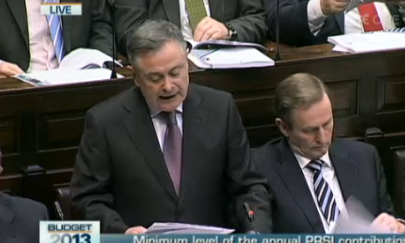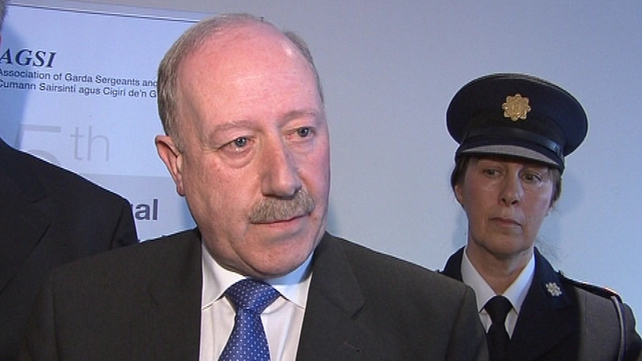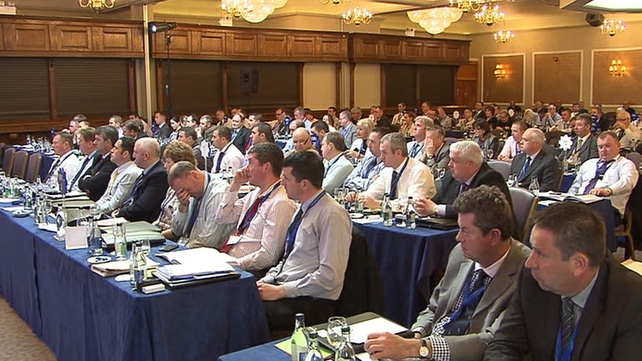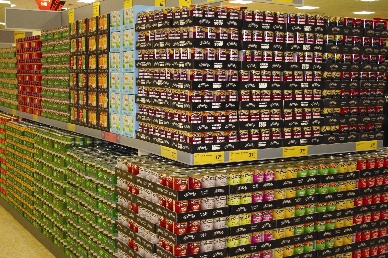Ireland faces two more years of austerity & spending cuts until 2015
Department of Finance release first formal projections for spending and tax revenues beyond 2015
Ireland faces at least two more years of tax increases and spending cuts before an easing of austerity in 2016.
According to the first formal projections for government spending and tax revenues beyond 2015, a neutral budget in 2016 depends on recovery in the Irish and international economies, the successful implementation of austerity budgets every year up to 2015, and no large additional banking costs.
Also today, the Governor of the Central Bank, Prof Patrick Honohan, said he believed the banks would need further capitalisation before 2019, when new global rules on capital requirements for banks will come into effect. He did not give a figure for how much more capital he believed they would need.
If the budget in 2016 does not contain new taxes and spending cuts, it will be the first non-austerity budget since 2008.
Under the constitution, a general election must be held no later than the spring of 2016. It has been the long-held objective of the coalition to have completed the budget adjustments before the next election.
The budget projections are contained the Stability Pact Update, a three-year economic and budgetary forecast all EU member states must submit to the European Commission by the end of April each year. Along with a number of other governments, the Fine Gael-Labour coalition submitted its update last night just before the end-April deadline.
Speaking to the Oireachtas Committee on Finance, Public Expenditure and Reform, the Minister for Finance, Michael Noonan, refused to be drawn on the 2014 budget, which is to be finalised by October of this year.
He said that the new forecasts are underpinned by a “technical assumption” that the promissory note savings, secured in February, will be allocated to deficit reduction. Mr Noonan said that how the savings are used needed to be discussed with the EU-IMF troika. He added that his preference would be for increased investment in job creation.
In the first update of the Government’s economic and budgetary projections since Budget Day 2013 in December of last year, gross domestic product – the widest measure of economic activity – is forecast to expand by 1.3 per cent this year and 2.4 per cent in 2014. Both forecasts are in line with the average across a range of public and private organisations’ forecasts and are only marginally changed from December.
In 2015-16, GDP growth is expected to reach 2.8 per cent. In 2016 the unemployment rate is forecast to stand at 12.3 per cent, down from 14.7 per cent last year.
Mr Noonan stressed that the figure and all others contained in the document are not Government targets, but forecasts compiled by Department of Finance officials.
Garda Commissioner refutes GRA figures claim over crime rates
Garda body says statistics being compiled in a manner that conceals offences such as burglaries although almost 5,000 suspects have been arrested in just over a year in a nationwide operation targeting burglaries. As official figures confirmed a huge surge in break-ins since the economic collapse,
The Garda Commissioner Martin Callinan has strongly rejected claims from the largest Garda body in the State that crime rates are being compiled in a manner that conceals many offences.
In a statement this morning Mr Callinan said he had no information or evidence of the allegations being spoken about and called on the president of the Garda Representative Association (GRA) John Parker to clarify his position and provide any evidence he has concerning this matter. Mr Callinan is due to address delegates in Westport, Co Mayo, this afternoon.
Last night Parker said a new system of categorising crime introduced about two years ago has seen some offences slip out of the official crime figures.
He had anecdotal evidence from rank-and-file gardaí of burglaries being recorded as criminal damage if, for example, nothing had been stolen but a window had been broken at a property.
“Categorisation is a skill and it’s easy to massage statistics, from one classification to another if all the boxes aren’t ticked. Similarly, you could have a person who genuinely [has been the victim of] a crime and they go so far as reporting it, the guard comes out, but the person doesn’t want to follow up and make a statement. So management have stated that without a statement of complaint signed; that is not a crime.”
He said such guidelines had been in operation for about two years. “In individual districts it became a practice and then it seemed to be widespread as regards to what is a crime, what is a complaint if all the boxes aren’t ticked, if a person doesn’t follow through . . . and formally made it into a complaint then it doesn’t exist as a crime.”
He said such a person was still the victim of a crime and that such incidents “shouldn’t be written off the books”.
The GRA represents about 11,200 rank-and-file gardaí in a force of 13,400 members.
Mr Parker made his comments at the opening session of the association’s annual conference in Westport last night.
Mr Parker said gardaí were very demoralised because manpower and other resources are so depleted, the investigation of crime is affected. “It’s a PR exercise often where you go out and you record [the crime] as much as you can and you try to allocate as much time as you can to the investigation of that crime.
“The manpower is not there for a serious follow-up to crime. On previous occasions what you would do is door-to-door [inquiries], you would saturate the area. These facilities are not there now.”
He said in relation to the murder of Det Garda Adrian Donohoe in Co Louth last January, teams from some specialist units in Dublin had been withdrawn because they were needed elsewhere.
And the lack of Garda vehicles meant some cars had to be hired to aid the probe. Others had been brought in from surrounding areas, where policing was depleted as a result.
The GRA has voted no confidence in Minister for Justice Alan Shatter and has not invited him to the conference. That move is unprecedented.
Mr Parker believed the number of District Court summonses had fallen by 22 per cent in the first quarter of the year for a variety of reasons, including fewer Garda man hours being worked and therefore less crime being detected.
The number of Garda vehicles was down 370 on 2009 numbers, a fall of about 30 per cent. Some new vehicles are so small they were like “lawnmowers” trying to keep up with high-powered vehicles driven by some gangs that not even the Garda helicopter could track.
Aldi and Lidl carve out 13% of the Irish retail market for themselves
German discount supermarkets Aldi and Lidl have sliced a record 13pc share of the Irish market, new research shows.
Irish shoppers are now spending a larger portion of their grocery budget in discount stores, with the average rising from €187 to €209 in this period.
The German retailers continued to gain ground in the 12 weeks ending April 14, according to Kantar Worldpanel Ireland.
Aldi, which now has a 6.4pc market share, saw sales jump by 28.5pc in the period examined. Lidl, which has a 6.6pc share of the market, grew sales by 7.3pc.
Inflation: Meanwhile, sales at Tesco fell 0.9pc, but it still holds top spot with 27.7pc.
Superquinn’s sales grew by 0.9pc, though its market share has fallen 0.1pc to 5.6pc when compared to last year.
David Berry, commercial director at Kantar Worldpanel, said that the rate of food-price inflation has dropped from 5.7pc last month to 5.3pc.
“This will be a welcome boost for shoppers following the recent high of 5.8pc in February,” he said.
“Fruit and vegetables have had the biggest impact on inflation with prices now increasing at a slower rate. Vegetable prices rose by over 13pc last month and this has fallen back to 12.7pc.”
New Europe series €5 notes to enter circulation in Ireland from Thursday
The new ‘Europa series’ will be phased in over a number of years


The Central Bank says new €5 notes will enter circulation here on Thursday. The new ‘Europa series’ of banknotes will be phased in over a number of years starting with the 5 euro note.
The new note is the same size and looks like the existing note but it also includes a number of new security features.
The watermark on the new note
These include a portrait watermark of the Greek goddess Europa, raised lines along the sides of the note, a shiny emerald-colour number and a portrait hologram of Europa.
The new note will circulate alongside the existing note which will remain legal tender.
This video from the European Central Bank (ECB) outlines the improved security features on the note:
Obese men in their 20s are 'Twice as likely to die in middle age' than their slim peers
- Has been known for some time that being overweight increases risk of diabetes and heart disease
- But Danish research has shown that being overweight in twenties has long-term detrimental effect on health
Danish researchers tracked the health of 6,500 Danish 22-year-old men for 33 years up to the age of 55.
All the men were born in 1955 and had registered with the Military Board for a fitness test to gauge their suitability for military service.
All potential conscripts in Denmark are subjected to a battery of psychological and physical tests, including weight.
Over 80 per cent were within the normal range and five per cent were underweight.
One in 10 were overweight and just over one per cent – equating to 97 men - were obese.
Normal weight is classified as a body mass index (BMI) of between 18.5 and 25; obesity is classified as a BMI of 30 or more.
Almost half of those classified as obese at the age of 22 were diagnosed with diabetes, high blood pressure, heart attack, stroke, blood clots in the legs or lungs, or had died before reaching the age of 55.
They were eight times more likely to get diabetes as their normal weight peers and four times as likely to get a potentially fatal blood clot.
They were also more than twice as likely to develop high blood pressure, have had a heart attack, or to have died.
Every unit increase in BMI corresponded to an increased heart attack rate of five per cent, high blood pressure and blood clot rates of 10 per cent, and an increased diabetes rate of 20 per cent.
In total, obese young men were three times as likely to get any of these serious conditions as their normal weight peers by middle age, conferring an absolute risk of almost 50 per cent compared with only 20 per cent among their normal weight peers.
The findings, published in the BMJ, have prompted researchers to warn that the continuing rise in obesity may counteract the fall in deaths from heart disease.
They said: ‘Obesity-related morbidity and mortality will, in decades to come, place an unprecedented burden on healthcare systems worldwide.’
Saturn hurricane snapped by Cassini space-craft


IN THE IMAGE, RED INDICATES CLOUDS AT LOWER ALTITUDES, WITH GREEN REPRESENTING HIGHER ALTITUDE
An enormous hurricane raging at Saturn’s north pole has an eye 2,000km (1,250mi) across – big enough to cover the UK 12 times over.
The striking images of the storm were snapped from a height of 420.000km (260,000mi) by the Cassini spacecraft, which arrived at Saturn in 2004.
They were captured in red and infrared wavelengths and have been false-coloured to show detail.
Scientists say the hurricane’s winds reach a staggering 150m/s (330mph).
But they do not know just how long the storm has been brewing.
When Cassini first arrived, the north pole was in darkness; it was winter in the planet’s 29-Earth-year annual cycle.
Now it has taken some of its first sunlit images of the pole, which has not been seen since the Voyager 2 craft last sent pictures on its fly-by in 1981.
Andrew Ingersoll, a member of the Cassini team based at the California Institute of Technology in California, US, said: “We did a double take when we saw this vortex because it looks so much like a hurricane on Earth.”
“But there it is at Saturn, on a much larger scale, and it is somehow getting by on the small amounts of water vapour in Saturn’s hydrogen atmosphere.”
The team believes the hurricane to be “stuck” at the pole, forced northward by winds in the same way hurricanes tend to move north on Earth.
Cassini caught sight of an even larger storm in 2006 – the first time a hurricane had been seen on another planet.








No comments:
Post a Comment